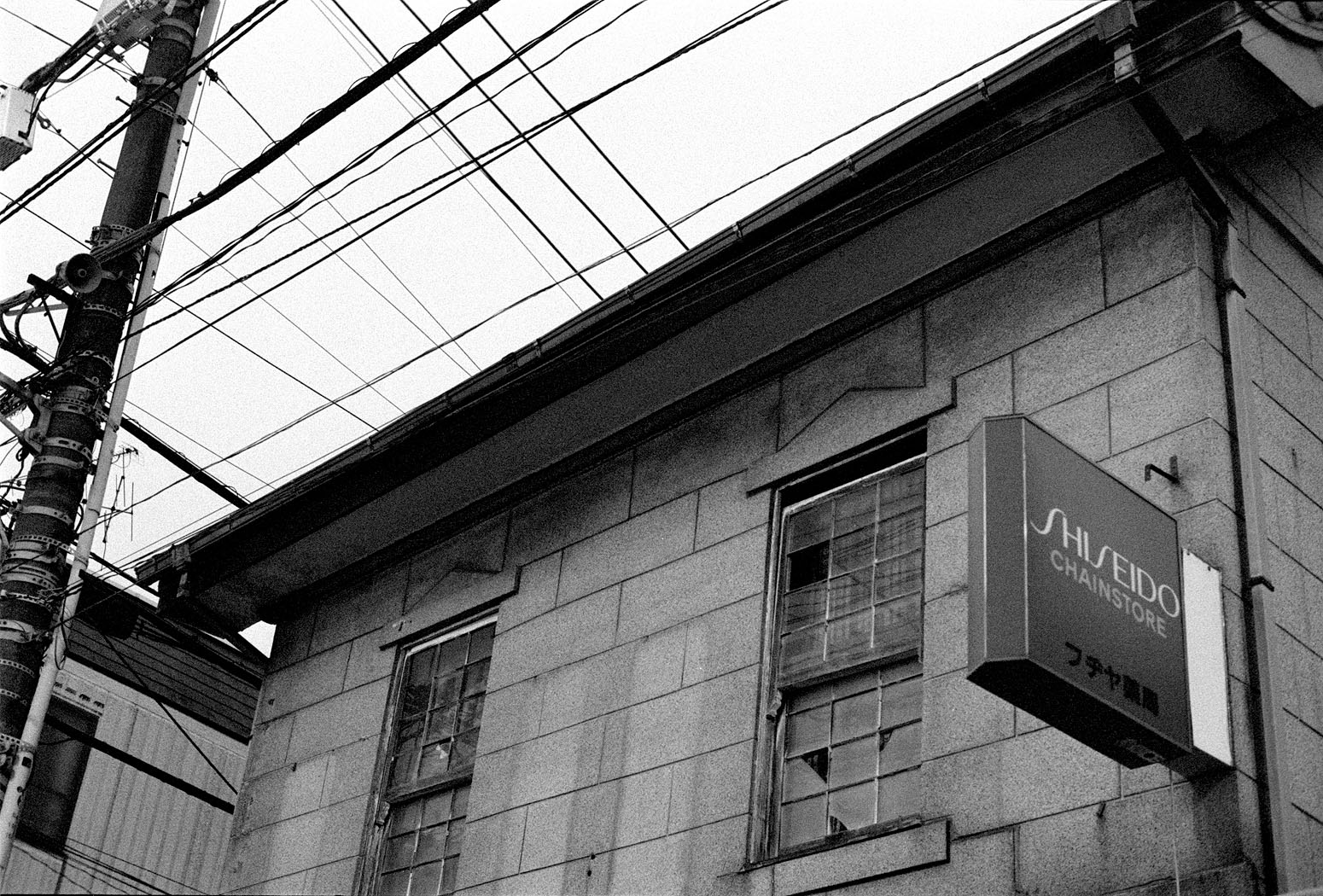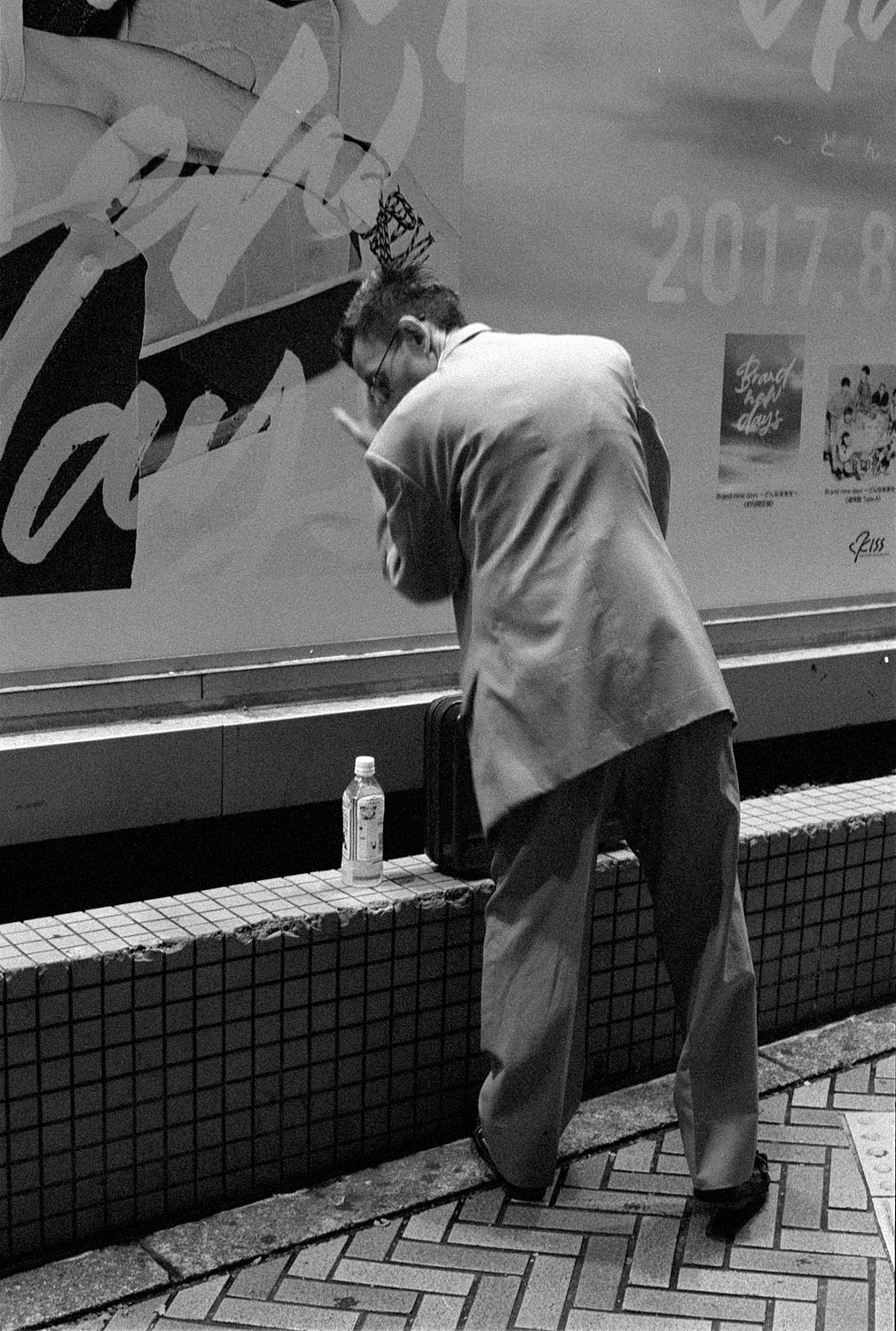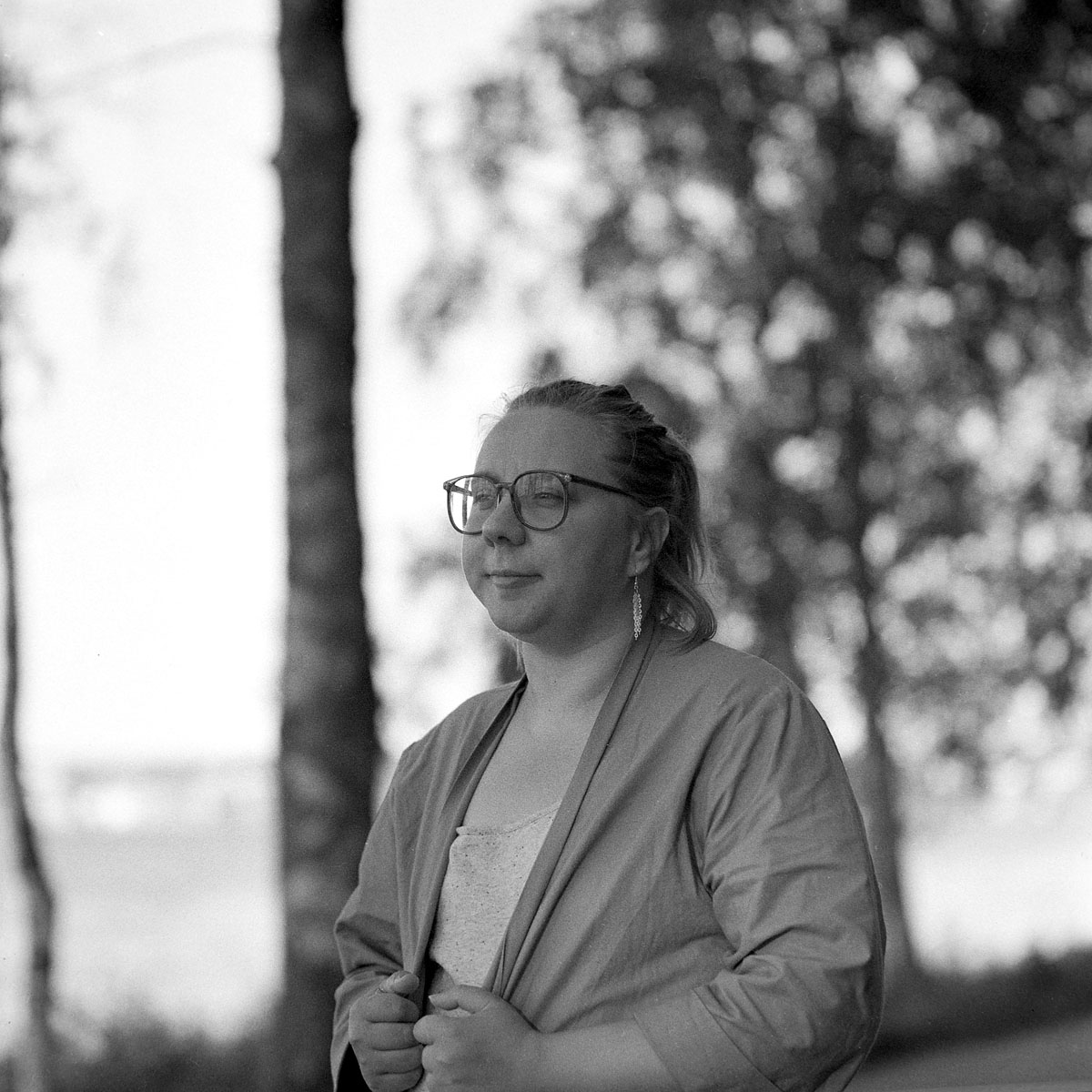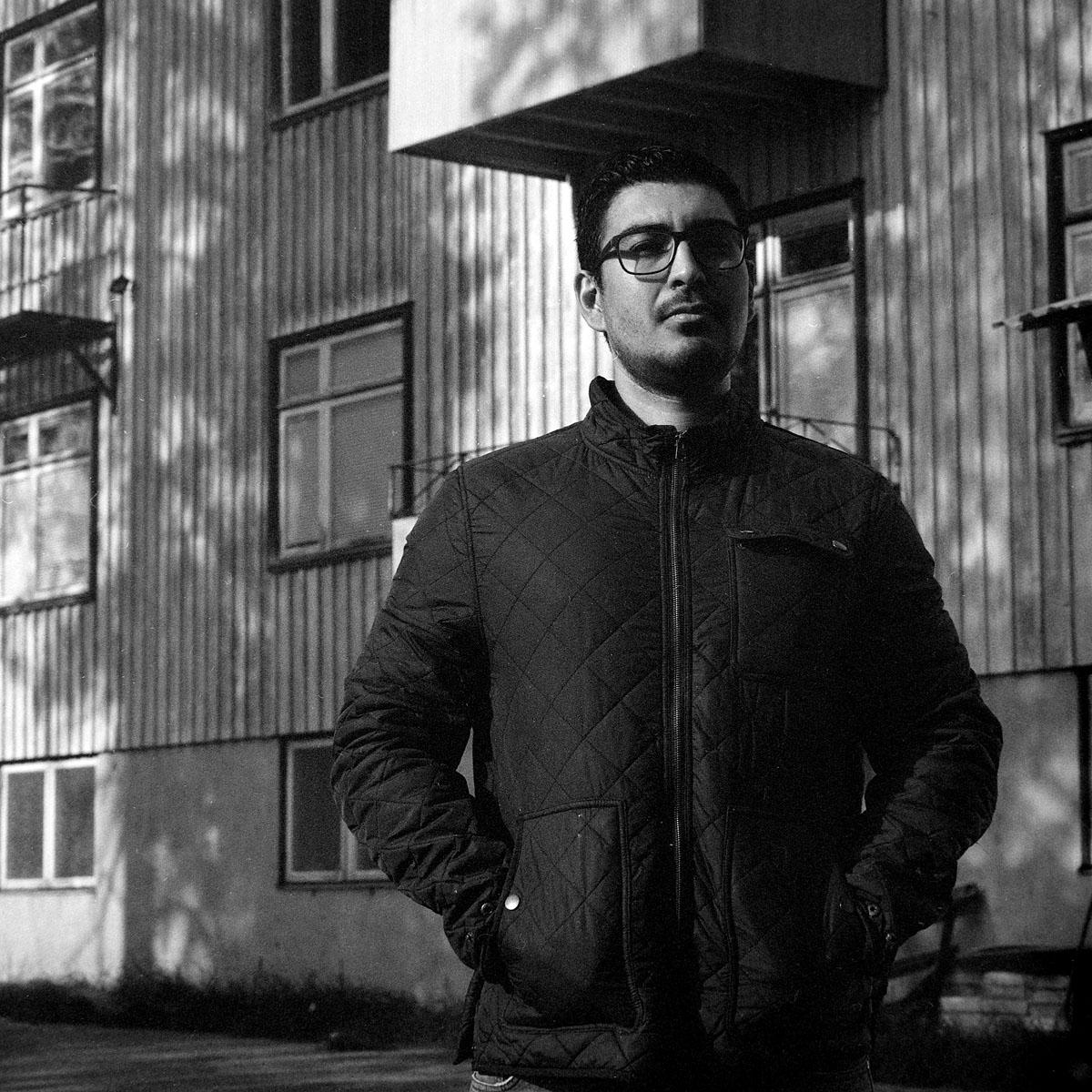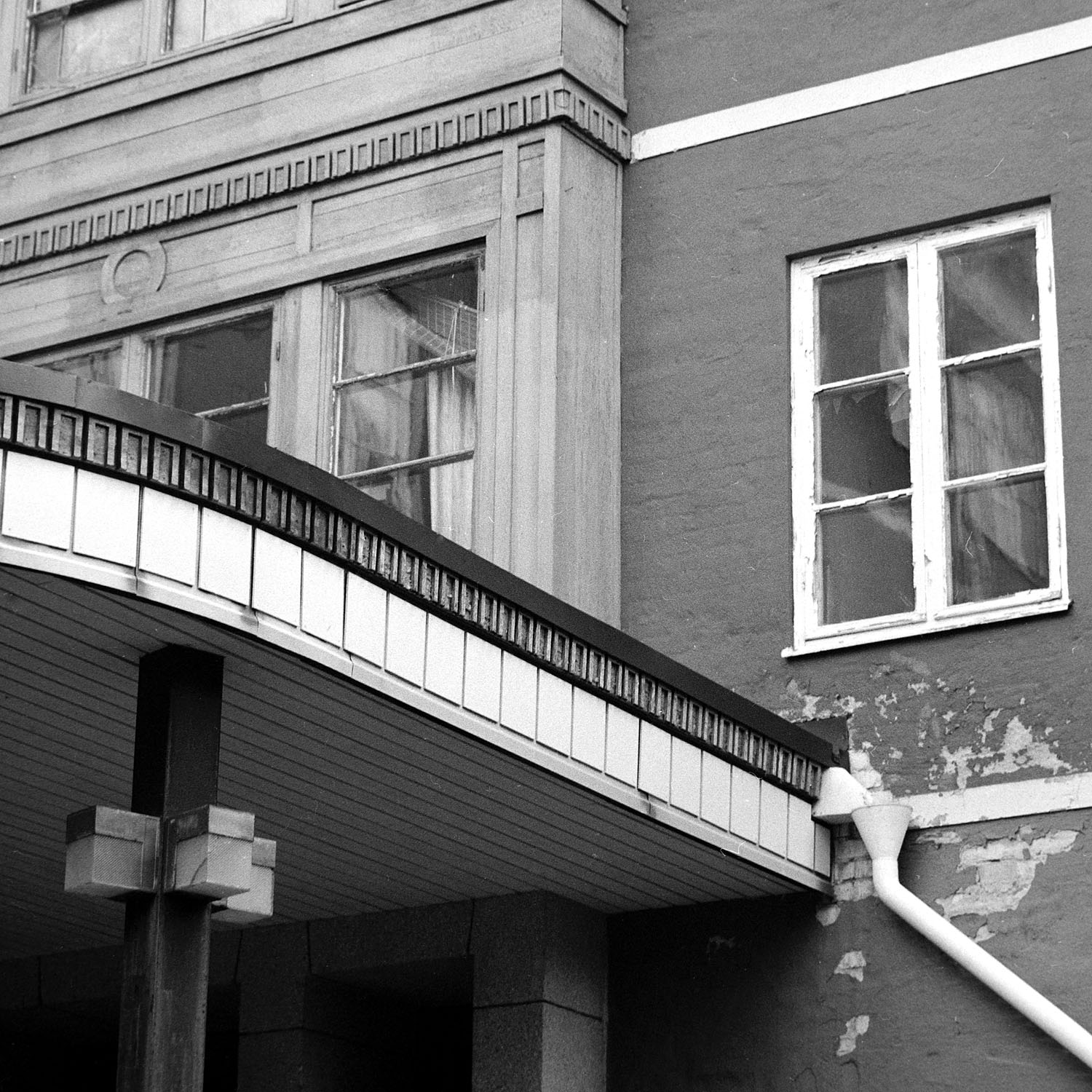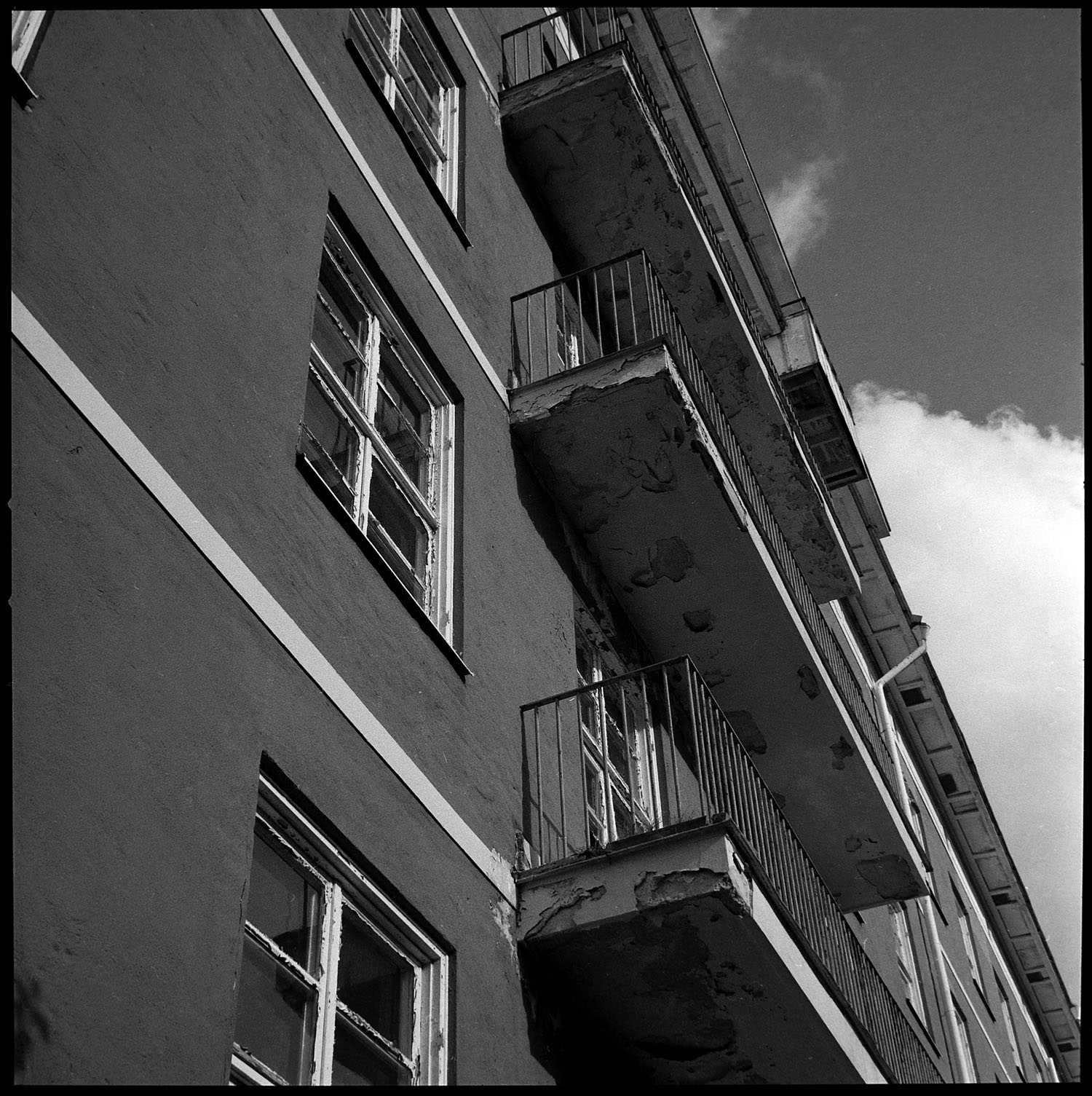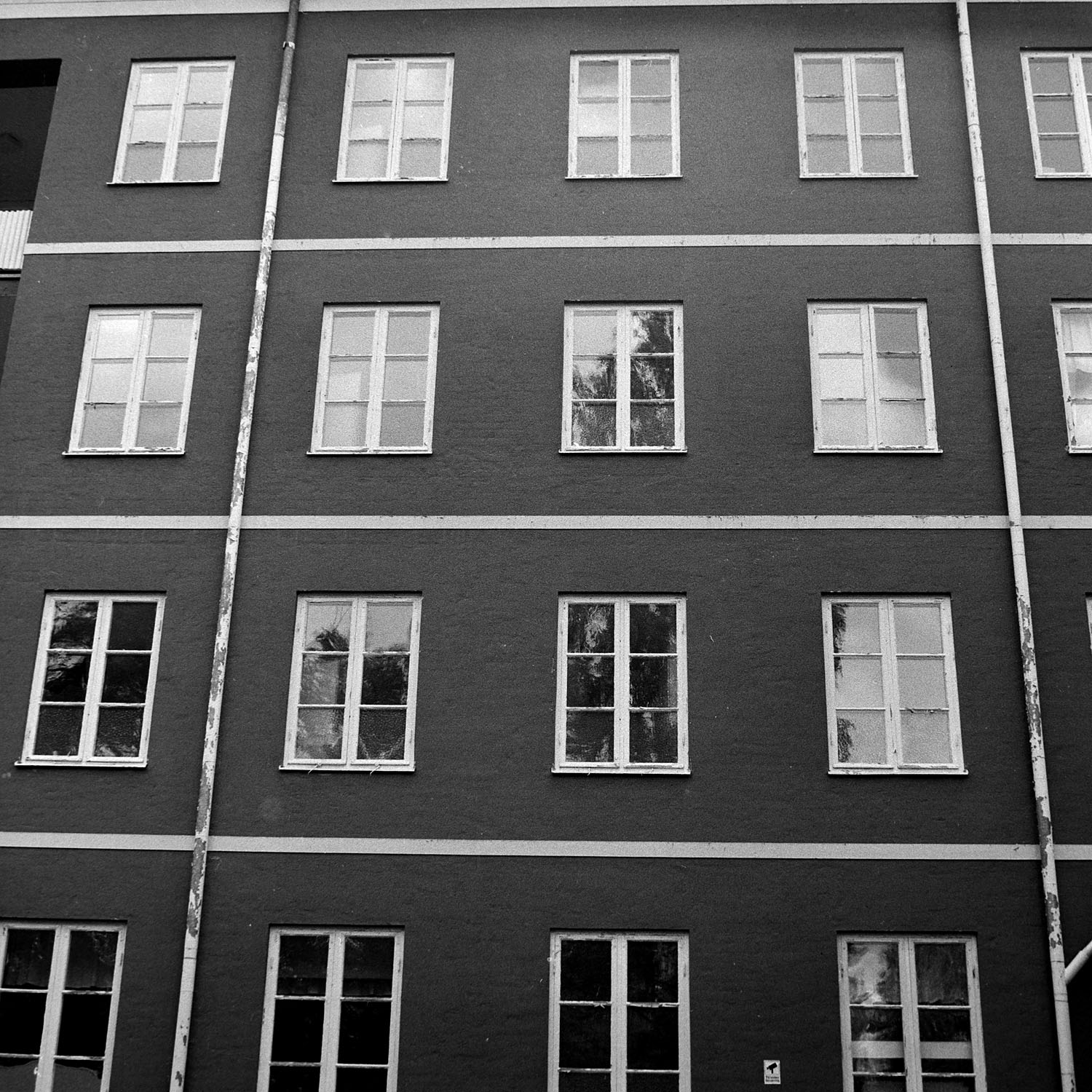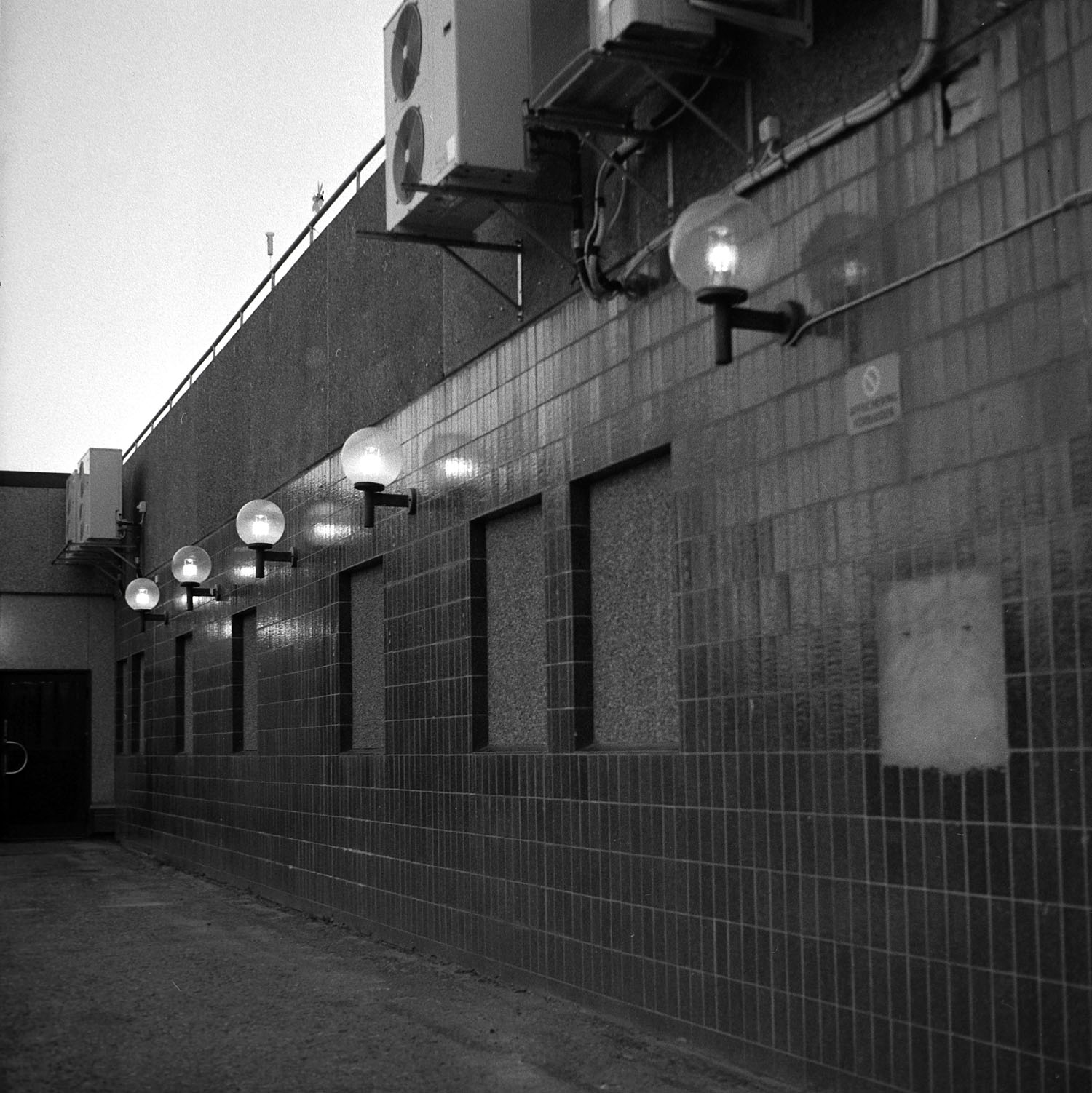Summary
Agfa traffic surveillance film, fine grain, hard contrast, goes up to the IR range, doesn't curl, clear film base.. is this.. is this JCH Streetpan for a fraction of the cost? I see some striking similarities, except at a lower film speed.
I gotta say the Pan160 looks pretty good for cityscapes, especially since I like a certain grimey look. I pull midtones way down, and I hate it when I get a mushy look when I want it to be generally dark/moody (Delta3200 worst offender). I'm not sure I would like this for portraits and such. Can't be sure, since I haven't tried, but solely based on the tonal range/feel. Film speed seems to be actually 160, none of that weird Rollei shit where film speed is two stops lower of advertised.
Pan200 looks equally fine, however, we are talking about a 0.33EV difference. A third of a stop. B/W film has so good latitude that if you expose two shots a third of a stop away from each other, there is no visible difference. So what is the point of this film? Honestly I can't say. It looks like the grain is a bit larger/visible compared to Pan200. I think you could might as well just push the Pan160 half a stop to 250 if you needed a tiny bit more speed. Maybe they just wanted to release a couple of different emulsions for the same range to then gauge what the public opinion is, and focus the efforts on either 160 or 200 depending on what people prefer?
Little difficult to judge the qualities of Pan200 this time since I shot with the Lomo LC-A.. Exposure is a little bit hit and miss, focus is off on a lot of shots, etc. Maybe Pan200 has qualities I am missing due to this. Luckily I have another roll of each left.
Just the fact that Silberra films have come out makes me happy. We got JCH Street pan, the re-release of Tmax3200, Ilford going still going strong. The chinese are back in the game with Lucky SHD100 and Shanghai GP3. I am not worried that I won't be able to get hold of the film i need for my own stuff in the long term. Black and white film seems to be going strong right now, and the worst dip is behind us. Both Pan160 and Pan200 I could definitely see myself using, especially at the price point I got these for..
Anyhow, let me know if you have any questions or if you would to read more about a certain subject I touched on in this post! Until next time.
[Edit:]
Silberra confirms my suspicion about Pan160/200: "PAN160 is alternative for PAN200, the latter shall be referred as Limited Edition at the moment. We'll decide later which one shall survive."


































































































































